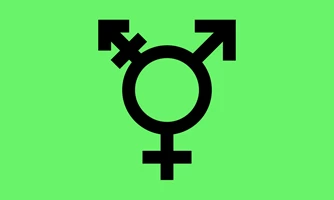 Gender and gender identity concepts is an ASWB exam content item found in the Diversity and Discrimination HBSE section. This is good material to have understood. Don't show up to the ASWB exam with outmoded ideas about gender and gender identity. (If you're cishet and over 40 or so, that's probably you.) Note that language is quickly evolving--this post may soon be out of date. A free practice question follows this quick primer.
Gender and gender identity concepts is an ASWB exam content item found in the Diversity and Discrimination HBSE section. This is good material to have understood. Don't show up to the ASWB exam with outmoded ideas about gender and gender identity. (If you're cishet and over 40 or so, that's probably you.) Note that language is quickly evolving--this post may soon be out of date. A free practice question follows this quick primer.
Gender and Gender Identity
Gender and gender identity are concepts that pertain to how individuals perceive and express their sense of self in relation to their gender. These concepts are important in understanding the diversity of human experiences. Here's a brief overview of both:
Gender:
- Gender refers to the roles, behaviors, expectations, and cultural norms associated with being male, female, both, or neither.
- Gender is a social construct that varies across cultures and time periods.
- Gender encompasses a wide spectrum of identities and expressions beyond just "male" and "female."
Gender Identity:
- Gender identity is an individual's sense of their own gender. It may or may not align with the sex assigned to them at birth.
- Gender identity is how a person understands themselves, whether as a man, woman, both, neither, or somewhere along the gender spectrum.
- It is an intrinsic aspect of a person's self-concept and may be fluid or fixed over time.
Additional key concepts related to gender and gender identity include:
Gender Expression:
- Gender expression refers to the way individuals outwardly express their gender identity through clothing, hairstyle, behavior, and other means.
- It is not necessarily tied to one's gender identity, as people may express themselves in various ways.
Cisgender:
- Cisgender individuals have a gender identity that aligns with the sex they were assigned at birth. For example, a person assigned female at birth who identifies as a woman is cisgender.
Transgender:
- Transgender individuals have a gender identity that differs from the sex assigned to them at birth. For example, a person assigned male at birth who identifies as a woman is transgender.
Non-Binary and Genderqueer:
- Non-binary and genderqueer are terms currently used by individuals whose gender identity falls outside the traditional binary of male and female. They may identify as both, neither, a combination of both, or somewhere along the gender spectrum.
Gender Dysphoria:
- Gender dysphoria is the distress that may accompany the incongruence between one's experienced or expressed gender and their assigned sex at birth.
- Some transgender individuals experience gender dysphoria, but not all do.
Gender Roles:
- Gender roles are societal expectations and behaviors associated with a particular gender. For example, traditional gender roles might include the expectation that men should be strong and women should be nurturing.
It's important to approach discussions of gender and gender identity with sensitivity and respect for the diversity of experiences. People's understanding and expression of their gender can be deeply personal, and societal attitudes and norms are evolving to better accommodate this diversity.
Wikipedia goes into far more detail.
Free Practice Question
Did you get all that? Let's find out. Here's a free ASWB exam-style practice question on the topic.
A social worker is counseling a young adult client who is exploring their gender identity and is uncertain about their preferred pronouns and gender expression. What is the most appropriate approach for the social worker in this situation?
A) Encourage the client to adhere to gender norms to minimize distress.
B) Discuss the potential risks and challenges of exploring a non-binary gender identity.
C) Create an affirming space for the client to explore and express their gender identity.
D) Advise the client to begin using new pronouns as soon as possible to minimize distress.
What's your answer?
When working with clients who are exploring their gender identity, it is essential for social workers to create a safe and affirming environment. This allows clients to freely explore and express their gender identity without judgment or pressure. Option A is not appropriate, as it encourages conformity to societal norms, which may not align with the client's authentic identity. Option B assumes a non-binary gender identity not mentioned in the question. Option D is not respectful of the client's process exploring their gender identity.
Got that? Great.
Now it's time for full-exam practice. Nothing gets you prepared for the social work licensing exam like full-length, realistic practice.

 Gender and gender identity concepts is an ASWB exam content item found in the Diversity and Discrimination HBSE section. This is good material to have understood. Don't show up to the ASWB exam with outmoded ideas about gender and gender identity. (If you're cishet and over 40 or so, that's probably you.) Note that language is quickly evolving--this post may soon be out of date. A free practice question follows this quick primer.
Gender and gender identity concepts is an ASWB exam content item found in the Diversity and Discrimination HBSE section. This is good material to have understood. Don't show up to the ASWB exam with outmoded ideas about gender and gender identity. (If you're cishet and over 40 or so, that's probably you.) Note that language is quickly evolving--this post may soon be out of date. A free practice question follows this quick primer.